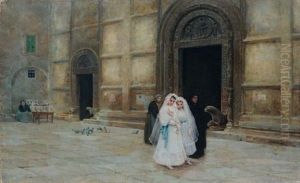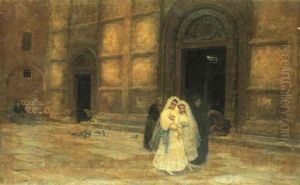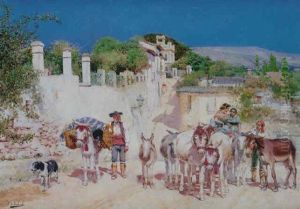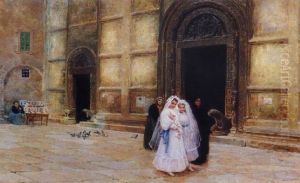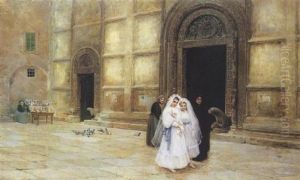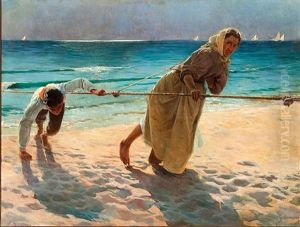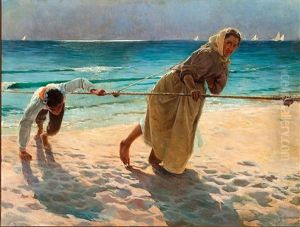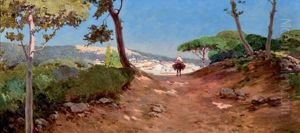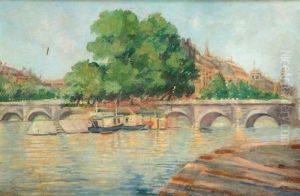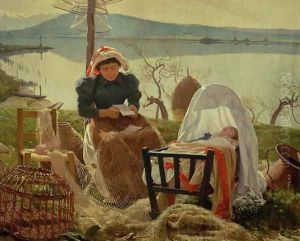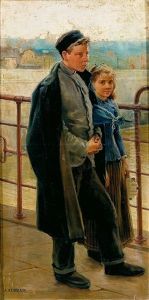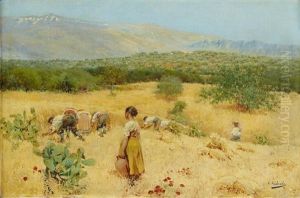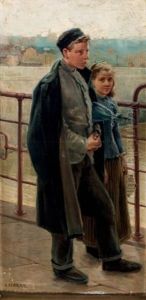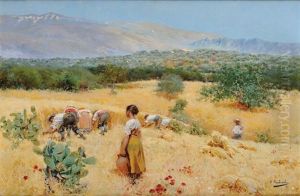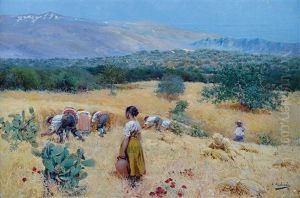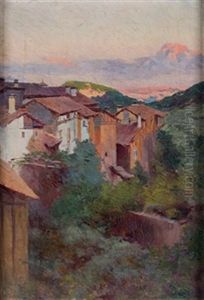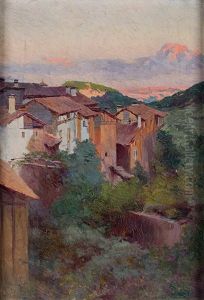Angel (Maria Isidro Rodriguez) Andrade Blazquez Paintings
Angel Andrade Blazquez, born on November 6, 1866, in Ciudad Real, Spain, was a prominent figure in the Spanish art world during the late 19th and early 20th centuries. Known for his versatile talent, Andrade excelled in various genres, including landscape, portraiture, and historical scenes. His education at the Real Academia de Bellas Artes de San Fernando in Madrid laid a solid foundation for his artistic career, enabling him to develop a distinctive style that blended the classical with the modern.
Throughout his career, Andrade was deeply influenced by the changing artistic currents of his time, navigating between the academic traditions of the 19th century and the emerging modernist sensibilities. His ability to adapt and evolve made him a respected figure among his contemporaries. In addition to his painting, Andrade was also an accomplished teacher and played a significant role in the education of the next generation of Spanish artists as a professor at the Escuela de Bellas Artes de San Fernando.
Andrade's work received considerable recognition during his lifetime, including awards at national and international exhibitions. His landscapes, often imbued with a sense of tranquility and a profound understanding of light, are considered some of his finest contributions to Spanish art. Andrade was not only celebrated for his artistic talents but also for his commitment to the cultural life of Spain, involving himself in various artistic and intellectual circles.
Angel Andrade Blazquez's legacy lives on through his contributions to Spanish art and education. His death on February 15, 1930, marked the end of an era, but his works continue to be admired for their beauty and emotional depth. Today, Andrade is remembered as a key figure in the transition between traditional and modern art in Spain, whose works reflect a unique blend of realism and sensitivity.
